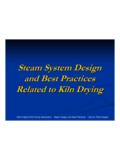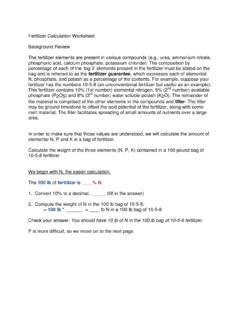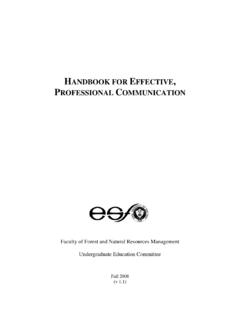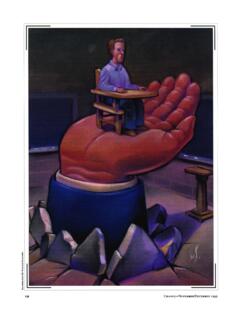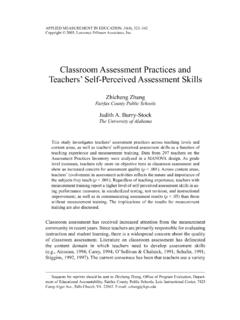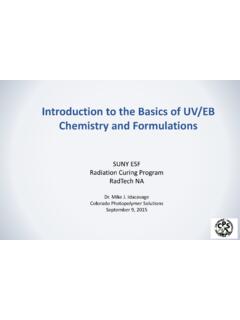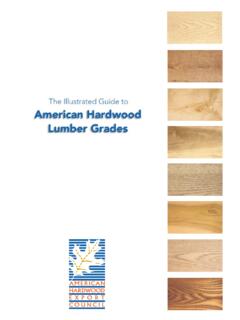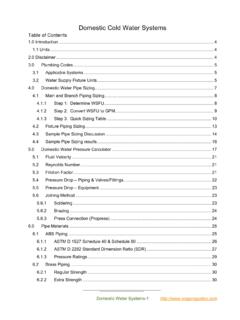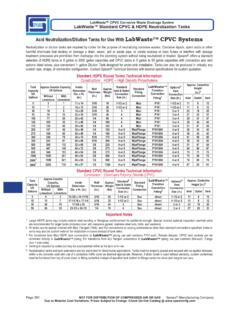Transcription of Steam System Design and Best Practices Related to Kiln Drying
1 New England Kiln Drying Association Steam Design and Best Practices HerLine TechnologiesSteam System Design Steam System Design and Best Practices and Best Practices Related to Kiln DryingRelated to Kiln DryingNew England Kiln Drying Association Steam Design & Best Practices HerLine TechnologiesWhat is Steam ?What is Steam ? Like other substances water can exist in the form Like other substances water can exist in the form of a solid, a liquid or a a solid, a liquid or a gas. Gaseous form of water is called STEAMG aseous form of water is called Steam ItIt s s HOTHOT ItIt s s PowerfulPowerful ItIt ssEasyEasyNew England Kiln Drying Association Steam Design & Best Practices HerLine TechnologiesWhy use Steam ?Why use Steam ? Made from water, which is relatively inexpensive and Made from water.
2 Which is relatively inexpensive and plentiful commodity available through out the worldplentiful commodity available through out the world Carries relatively large amounts of energy in a small massCarries relatively large amounts of energy in a small mass Temperature can be adjusted accurately by controlling its Temperature can be adjusted accurately by controlling its pressure using control valvespressure using control valves Environmental friendlyEnvironmental friendly Relatively inexpensive to generate when firing with wood Relatively inexpensive to generate when firing with wood chipschipsNew England Kiln Drying Association Steam Design & Best Practices HerLine TechnologiesSteam Steam --the best choicethe best choiceWhy other systems fail to measure up to Steam ?Why other systems fail to measure up to Steam ?
3 1. Gas fired direct heating1. Gas fired direct heating Higher operating cost than wood fired boilerHigher operating cost than wood fired boiler More difficult to controlMore difficult to control Higher MaintenanceHigher Maintenance Requires separate humidification systemsRequires separate humidification systems2. Electric heating2. Electric heating Very high cost to operateVery high cost to operate Requires separate humidification systemsRequires separate humidification systems3. Hot water systems3. Hot water systems Carries less than 1/5 Carries less than 1/5thth(20%) the heat (Btu(20%) the heat (Btu s) of Steams) of Steam Higher System installation costHigher System installation cost Higher operating costsHigher operating costsNew England Kiln Drying Association Steam Design & Best Practices HerLine TechnologiesRequirements for an Effective, Requirements for an Effective.
4 Efficient and Safe Steam SystemEfficient and Safe Steam System Good initial System designGood initial System Design High quality System equipment and componentsHigh quality System equipment and components Good knowledge of System operational safeties Good knowledge of System operational safeties and periodic testing of safety devicesand periodic testing of safety devices Good System operational knowledge and practicesGood System operational knowledge and Practices Regular tuning and maintenanceRegular tuning and maintenance Replacement of old or worn componentsReplacement of old or worn componentsNew England Kiln Drying Association Steam Design & Best Practices HerLine TechnologiesSteam System SubSteam System Sub--SystemsSystems Steam GenerationSteam Generation Steam DistributionSteam Distribution Steam UtilizationSteam Utilization Condensate RecoveryCondensate RecoveryNew England Kiln Drying Association Steam Design & Best Practices HerLine TechnologiesSteam GenerationSteam GenerationNew England Kiln Drying Association Steam Design & Best Practices HerLine TechnologiesSteam Generation Steam Generation the Boiler Housethe Boiler House Steam Boiler Steam Boiler high or low pressurehigh or low pressure Boiler Feed Water Tank Boiler Feed Water Tank minimumminimum Condensate Surge Tank & DA Tank Condensate Surge Tank & DA Tank idealideal Water Softeners for makeWater Softeners for make--up waterup water Chemical Treatment System for boiler waterChemical Treatment System for boiler water Surface blow down (TDS)
5 Control System for boiler Surface blow down (TDS) control System for boiler recommendedrecommended Flash Steam and blow down heat recovery systems Flash Steam and blow down heat recovery systems --optionaloptionalNew England Kiln Drying Association Steam Design & Best Practices HerLine TechnologiesSTEAM GENERATIONSTEAM GENERATIONNew England Kiln Drying Association Steam Design & Best Practices HerLine TechnologiesGenerating Quality SteamGenerating Quality SteamImpurities - bottom blow down to wasteGood quality Steam to plantBuild up of impurities in the boiler surface blow down to drain or heat recoveryFeed water with impuritiesNew England Kiln Drying Association Steam Design & Best Practices HerLine TechnologiesTypical Simple Boiler Feed Water Typical Simple Boiler Feed Water TanksTanksSURGE-1BF- 1 ORVent
6 ToAtmosphereCondensateReturnsCondensateR eturnVent toAtmosphereBF-1BF-2To BoilerTo BoilerNew England Kiln Drying Association Steam Design & Best Practices HerLine TechnologiesTypical Deareator TankTypical Deareator TankDEA - 10 LB/HDirect condensate returns,pumped returns & make-up waterLow pressure steamsupply to deareatorTo BoilerNew England Kiln Drying Association Steam Design & Best Practices HerLine TechnologiesSurge and DA Tank CombinationSurge and DA Tank CombinationSURGE- 1 DEA - 10 LB/H? PSIG5 PSIGPRV -10 LB/HCR-1 Surge tank is vented to the atmosphereMake-up water is usually added here and pre-heatedDA tank is pressurized with steamTypical Condensate pumpNew England Kiln Drying Association Steam Design & Best Practices HerLine TechnologiesOptional Heat Recovery SystemsOptional Heat Recovery SystemsTypical Blow down Heat RecoverySystemNew England Kiln Drying Association Steam Design & Best Practices HerLine TechnologiesComplex Flash Recovery SystemComplex Flash Recovery SystemNew England Kiln Drying Association Steam Design & Best Practices HerLine TechnologiesThe Steam Distribution The Steam Distribution SystemSystemNew England Kiln Drying Association Steam Design & Best Practices HerLine TechnologiesSteam Distribution SystemSteam Distribution
7 System Proper layout Design & pipe sizing of mainsProper layout Design & pipe sizing of mains Piping always pitched in the direction of flowPiping always pitched in the direction of flow Use of eccentric reducers to eliminate creation of Use of eccentric reducers to eliminate creation of condensate collection points (low spots) in pipingcondensate collection points (low spots) in piping Use of separators to eliminate wet steamUse of separators to eliminate wet Steam Proper drip trap stations in all required locationsProper drip trap stations in all required locations Use of air vents at all endUse of air vents at all end--ofof--main locationsmain locations Make Steam main branch takeMake Steam main branch take--offs from top of pipeoffs from top of pipe Use of pressure reducing valves as needed or desiredUse of pressure reducing valves as needed or desired Put strainers before control valves, traps and pumpsPut strainers before control valves.
8 Traps and pumpsNew England Kiln Drying Association Steam Design & Best Practices HerLine TechnologiesSteam DistributionSteam DistributionTypical Steam CircuitTypical Steam CircuitNew England Kiln Drying Association Steam Design & Best Practices HerLine TechnologiesNew England Kiln Drying Association Steam Design & Best Practices HerLine TechnologiesTypical Steam Distribution HeaderTypical Steam Distribution HeaderNew England Kiln Drying Association Steam Design & Best Practices HerLine TechnologiesPipe SizingPipe Sizing Greater Heat LossGreater Heat Loss Greater CostGreater Cost Greater Volume of Condensate Greater Volume of Condensate FormedFormed Greater System Pressure DropsGreater System Pressure Drops Not Enough Volume of Steam Not Enough Volume of Steam Water Hammer and ErosionWater Hammer and ErosionNew England Kiln Drying Association Steam Design & Best Practices HerLine Technologies1 - 12 oz Can of Soda cu - 4 Drawer Filing Cabinets cu ft @ 0 psig [1675:1]1 - 4 Drawer Filing Cabinets cu ft @ 15 psig [867:1]1 - Drawer of Filing Cabinet cu ft @ 100 psig [243.]
9 1] Steam VolumeSteam VolumeNew England Kiln Drying Association Steam Design & Best Practices HerLine TechnologiesSizing Sizing Steam Steam LinesLinesNew England Kiln Drying Association Steam Design & Best Practices HerLine TechnologiesSteam Main Steam Main Relaying to Higher LevelRelaying to Higher LevelSteamRelayto highlevelDrain Points150 - 300 ftFall 1/250 Steam FlowNew England Kiln Drying Association Steam Design & Best Practices HerLine TechnologiesSteam Line ReducersSteam Line ReducersCondensateCorrectIncorrectSteamS teamCondensateNew England Kiln Drying Association Steam Design & Best Practices HerLine TechnologiesHow Separators WorkHow Separators WorkS3 SeparatorCondensate OutletWet SteamDry SteamSteam SeparatorsSteam SeparatorsNew England Kiln Drying Association Steam Design & Best Practices HerLine TechnologiesProper Drip Trap StationProper Drip Trap StationCondensatePocketSteam Trap SetCross SectionCross SectionSteam Trap SetSteam FlowSteam FlowCorrectCorrect99 IncorrectIncorrect88 New England Kiln Drying Association Steam Design & Best Practices HerLine TechnologiesHDSize of Main D Collection Leg Diameter1/2 to 6 6 & largerSame dia.
10 As main D 2 to 3 Pipe Sizes Smaller than Main, But Never Smaller than 6 Length of Collection Leg H Automatic Start up: H to be 28 or MoreSupervised Start up: Length to be1-1/2 times Steam Main Diameter, but never shorter than 18 Typical Steam Main Drip StationTypical Steam Main Drip StationNew England Kiln Drying Association Steam Design & Best Practices HerLine TechnologiesSteam Traps in Steam Traps in a Typical Steam Circuita Typical Steam CircuitNew England Kiln Drying Association Steam Design & Best Practices HerLine TechnologiesAir VentingAir VentingSteam MainThermodynamic Steam Trap SetAirBalanced Pressure Air VentNew England Kiln Drying Association Steam Design & Best Practices HerLine TechnologiesBranch ConnectionsBranch Connections9 Correct8 IncorrectSteamSteamCondensateNew England Kiln Drying Association Steam Design & Best Practices HerLine TechnologiesSupply LegSupply LegShut Off ValveTrap SetMainNew England Kiln Drying Association Steam Design &
